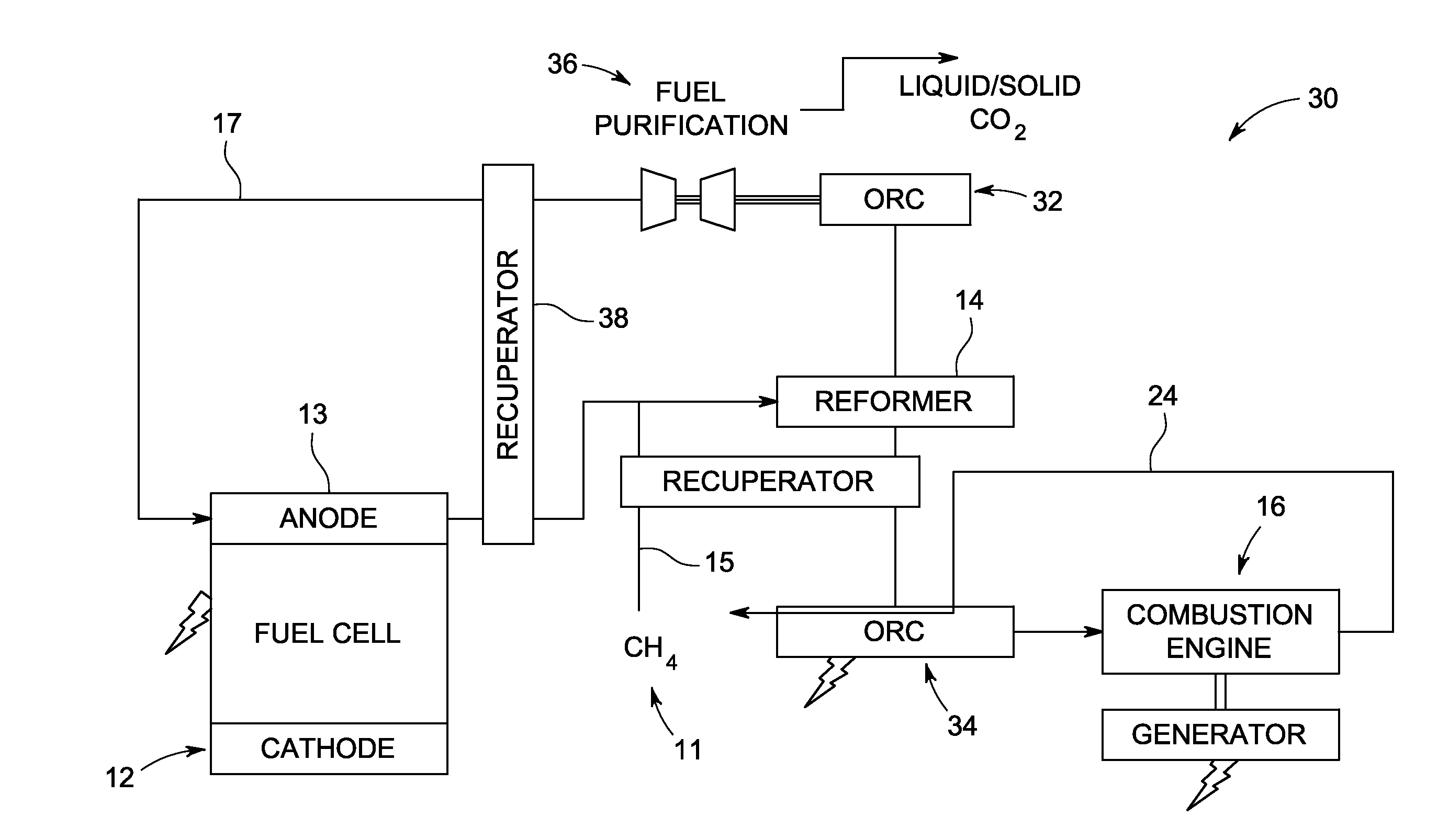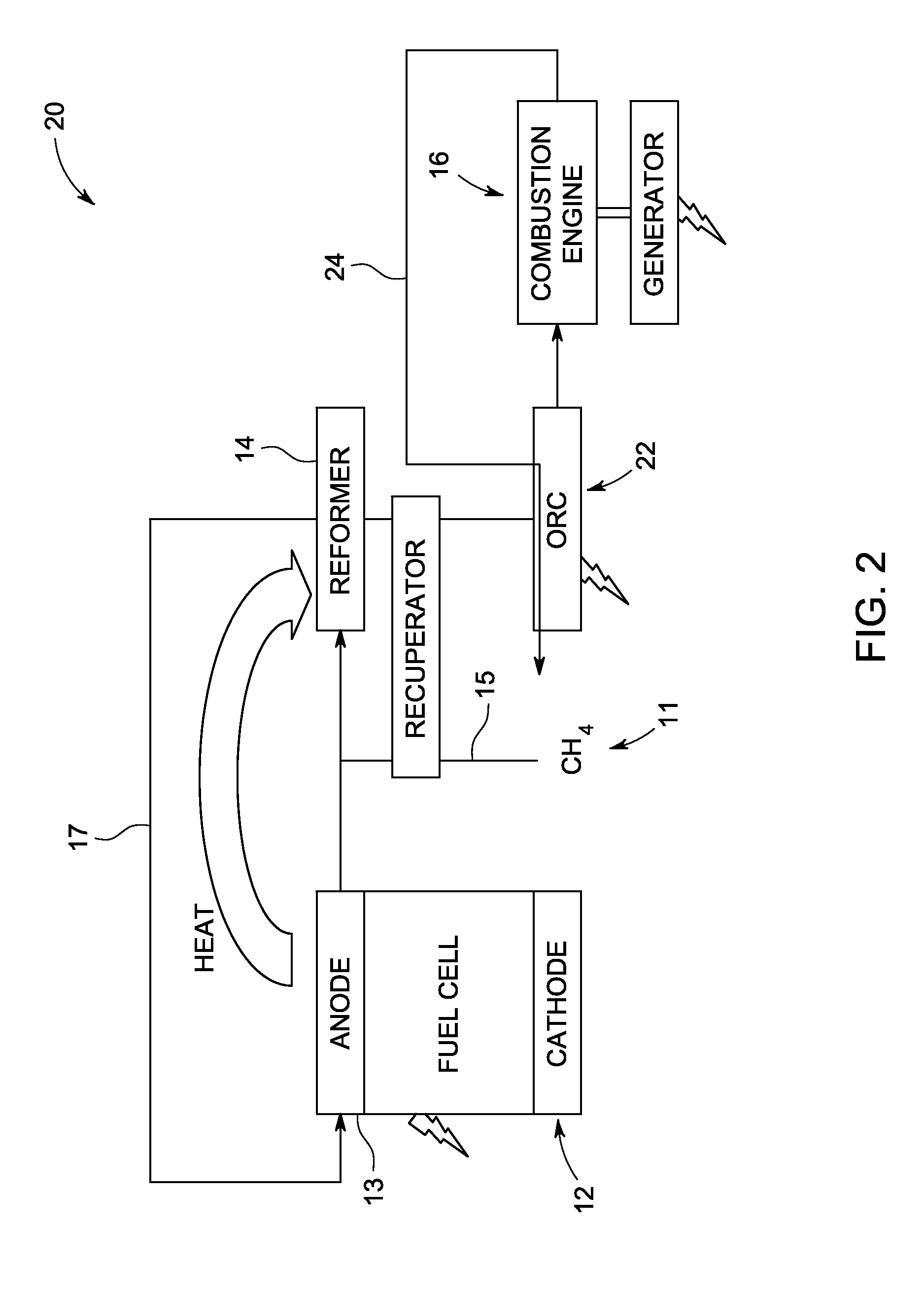Solid-oxide fuel cell high-efficiency reform-and-recirculate system
a fuel cell and high-efficiency technology, applied in the field of combined cycle fuel cell systems, can solve the problems of limited capacity of fuel cells to convert hydrocarbon fuel into electrical energy, possible reform,
- Summary
- Abstract
- Description
- Claims
- Application Information
AI Technical Summary
Problems solved by technology
Method used
Image
Examples
Embodiment Construction
[0042]The embodiments described herein with reference to the Figures advantageously provide increased plant efficiencies greater than 65% in particular embodiments that employ recirculation features. Advantages provided by the recirculation features described herein include without limitation, an automatic supply of water to a reformer, negating the requirement for a separate water supply.
[0043]Other embodiments of the present invention are also contemplated, as noted in the discussion. The principles described herein can just as easily be applied for example, to comparable fuel-cell technologies that are not strictly solid-oxide fuel cells. A vast variety of waste heat recovery cycles and methods for integrating those cycles are also possible using the principles described herein.
[0044]FIG. 1 is a simplified diagram illustrating a combined cycle power plant 10 that employs a solid-oxide fuel cell (SOFC) 12 running on reformed fuel with recirculation in which a reformer 14 feeds a r...
PUM
 Login to View More
Login to View More Abstract
Description
Claims
Application Information
 Login to View More
Login to View More - R&D
- Intellectual Property
- Life Sciences
- Materials
- Tech Scout
- Unparalleled Data Quality
- Higher Quality Content
- 60% Fewer Hallucinations
Browse by: Latest US Patents, China's latest patents, Technical Efficacy Thesaurus, Application Domain, Technology Topic, Popular Technical Reports.
© 2025 PatSnap. All rights reserved.Legal|Privacy policy|Modern Slavery Act Transparency Statement|Sitemap|About US| Contact US: help@patsnap.com



